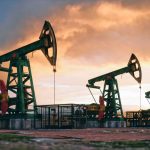Asia’s key LNG importers are looking to a boost in US LNG production in the coming years, following a turnaround in US LNG export policy with the immediate lifting of a nearly year-long pause on export permits, as newly inaugurated President Donald Trump signed an order Jan. 20 to unleash energy supply.
The views from Asia’s key LNG demand centers in Northeast Asia as well as Southeast Asia come as the US Department of Energy said it was ending its LNG pause, effective Jan. 20, following directions given by Trump to “unleash American Energy Dominance.”
“We are very pleased with this move,” said Asia Natural Gas & Energy Association CEO Paul Everingham on Jan. 21, referring to Trump’s decision to start reviews of applications for approving LNG export projects as expeditiously as possible.
The development is very positive for producers, as it removes the production risk. It is also very favorable for countries looking to source LNG from the US, Everingham said.
US LNG is “very critical” for energy security, affordability and reliability in Asia, Everingham added.
According to data from S&P Global Commodity Insights, the long-term LNG demand forecast for “other Asia” — comprising Bangladesh, China, India, Indonesia, Malaysia, Myanmar, Pakistan, the Philippines, Singapore, Sri Lanka, Thailand, Vietnam and Australia — is set to rise from an estimated 154.35 million mt in 2025 to over 400 million mt by 2050.
Japan sees the US decision to end its pause on LNG export permits as boosting predictability for its LNG procurements, a government official told Commodity Insights on Jan. 21, as Tokyo had earlier expressed concerns to Washington that the pause could dampen new LNG offtake and investment at various levels.
“We recognize that the lifting of the US LNG export permit could not only increase supplies to the structurally tight global LNG supply and demand but also stabilize the market,” the official said.
In South Korea, officials at two major LNG importers said that the lifting of the US LNG export permit is expected to help increase supplies and stabilize LNG prices, adding that prices are one of the most important factors behind their LNG imports.
In Southeast Asia, Andrew Stuart Kirk, head of LNG business at Thailand’s B. Grimm Power Public Co., said that Trump’s move is set to “actively” promote LNG projects in the US, as “investments in US LNG are also likely to receive a boost because of more certainty around the projects that are in the works.”
“Demand for LNG in Asia is only going to increase. Having more options [in terms of supply] is a good thing because it is going to keep prices down,” Kirk said.
Nevertheless, several Chinese LNG traders said they are unconcerned about the latest US move amid the country’s well-supplied domestic market, adding that the lifting of the export permit ban would increase US LNG supply primarily heading to Europe.
Market views
“Unlike Japan, China has not been vocal about concerns over the permitting pause. The threat of tariffs and the weak economic situation in China will be more pressing issues for Chinese buyers,” said Megan Jenkins, associate director with the global LNG team at Commodity Insights.
“From a business perspective, it is a good thing to have more supply and lower prices. However, if trade tensions between the US and China escalate, it could become a question of optics for Chinese buyers, who may not want to be associated with buying too much US LNG,” Jenkins said.
China currently holds at least 19 medium- and long-term LNG contracts with US exporters, with an estimated contract volume of approximately 23.2 million mt/year, according to data from Commodity Insights.
These contracts involve several US export projects, including Cheniere’s Corpus Christi LNG and Sabine Pass LNG projects, Venture Global’s Calcasieu Pass LNG, Plaquemines LNG and CP2 LNG projects, Energy Transfer’s Lake Charles LNG project and NextDecade’s Rio Grande LNG project.
The previous US administration under President Joe Biden, on Jan. 26, 2024, said that it would “pause” issuing key LNG export permits to allow the DOE to update its assessment of the impact of new terminals on the economy, climate change and national security.
The review centered on the criteria the DOE considers when deciding whether to permit projects to export LNG to countries that lack free trade agreements with the US. Such countries make up most of the global LNG import market, making the receipt of non-FTA export permits a critical step for major US LNG export projects to be commercially sanctioned.
Pending non-FTA LNG export applications at the DOE include the Venture Global CP2 LNG project, with which Japan’s JERA and INPEX each have sales and purchase agreements to lift 1 million mt/year of LNG for 20 years.
“We see the lifting of the assessment freeze positively because the realization of new US LNG projects, including the CP2 LNG project, is important to stabilize supply for Japan and around the world,” a JERA spokesperson said. “From now on, we will be closely monitoring details such as assessment processes and timelines.”
Following the lifting of the US LNG export permit pause, an INPEX spokesperson said, “We will need to watch the possibilities of gas demand increase in the US as a result of easing regulations for thermal power generation.”
Japan’s Kyushu Electric has also emerged as a potential buyer in talks over long-term LNG purchases and equity investment tied to Energy Transfer’s proposed Lake Charles export project in Louisiana.
The latest move enables such sales to India, China and Japan, as the only countries with which the US has an FTA in Asia, outside the Middle East, are Singapore and South Korea.
Now, American gas field developers and exporters will have the flexibility to sell their output and shipments to all the major importing countries, a shipbroker said.
Source: Platts






